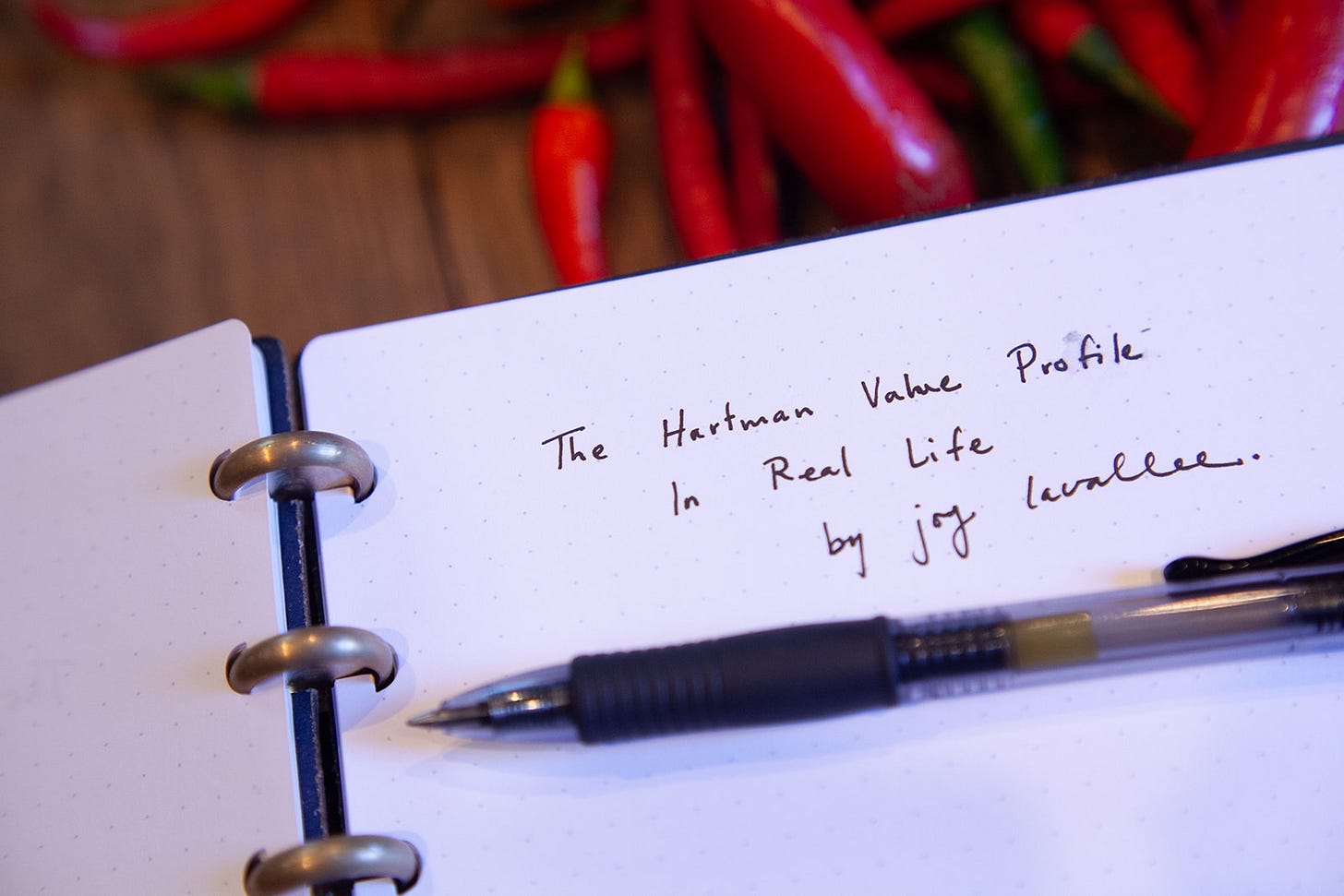HVP Indicators: Realism to Idealism & Role Identity
Part 6: Dealing with what is, what could be, and the ground where we put down our deepest roots.
Yesterday was a day that called for more sunshine and fresh air and less time in front of a screen. Here is the short and simple.
Intro
So far, the indicators we covered reflect different amounts of bandwidth for noticing and problem-solving. But these two indicators are just a range or sliding scale–it’s information that can be helpful to know about ourselves.
If all the indicators on a report were to be divided into chapters, the stages of thinking or good judgment that is parsed out in the HVP, it would be something like:
Step 1 - Noticing: How we take in information from the outside world and our internal world.
Step 2 - Problem-Solving: How we create options and ideas with the information we have.
Step 3 - Implementation: How we choose solutions and implement our thinking.
We’re picking up on the second step: problem-solving.
Both Problem Solving Styles reflect the time, intention, and bandwidth we have for thinking through the choices we’re making.
Now, the Realism/Idealism indicator reflects the perspectives from which we tend to start our problem-solving process. The Role Identity indicator reflects the internal grounds from which we tend to stake our deepest sense of identity.
POV: What Is and What Could Be
The Realism to Idealism is the World-side indicator that reflects our general point of view towards the situation when we start our problem-solving process. “This is how it is” is on one end and “This is how it could/should be” is at the other end.
In the sample above, the indicator reflects an individual who tends to see situations through the lens of “This is how it could be” or “This is how it should be.”
On the far ends of the range, there tends to be more resoluteness of perspective. In the middle, there tends to be more flexibility and ease in seeing “what is” and the possibility of “what could be.”
The opportunity here is to pay attention to our vantage point when we’re thinking about how to best find a solution to the problem or issue in front of us.
We might start from the perspective that this is just how it is. Or on the end, that this should be different.
Or somewhere between, like this is how it is now, and I wonder what it could become.
The Realism/Idealism indicator reflects how we tend to first see the situation and problems in front of us.
Where We Anchor In
On the internal Self-side, the Role Identity indicator reflects where we tend to anchor our deepest sense of identity.
On one side, an identity rooted in “Who You Are” is that our sense of who we are is attached to our intrinsic value as a unique human being. Because our intrinsic value never changes, this tends to be a more solid foundation to anchor into.
On the other side, when our identity is over on the “What You Do” side, our identity is informed by our roles, titles, purpose and work in the world, beliefs, and lifestyle.
Because this is a range, it’s fair to remember that we scoot around between these poles and always have a bit of both going on. The opportunity is to pay attention to what we have anchored our identity into so we can determine if it’s a foundation that is serving us well.
In Real Life
As we pay attention to the perspective we tend to solve problems from, there are opportunities to hone into what works well for us and where we drain extra energy.
If we lean toward the Realism side of “what is,” we have the strength of seeing people, situations, work, and projects more for what they are. We can be intentional to also remain open to the potential for change and hope for what can become.
If we lean toward the Idealism side, we have the strength of seeing people, projects, and situations for the potential of what they can become. We can take care to see the current reality as the starting point so we don’t get stuck in the disappointment of reality not matching our hopes of what could become.
We experience the full range of our creative problem-solving power when we can hold the tension of both—the clarity to see what is and the hope and vision to know what can become.
NOTE: If you are new here–so glad to have you! This is the sixth part in a 21-part series about the specific information that is available through a Hartman Value Profile report. The purpose is to create an HVP indicator index for anyone to use, whether you have your own HVP report or not.
If you don’t have a report, this series is designed so that you can use each article as a starting point to notice how you think and make decisions in your daily life. HVP reports reflect very specific information that is often challenging to see in ourselves, but it isn’t necessary to see yourself more clearly.
Indicator Series:
About the 21-Part Indicator Series
Pt. 2: Tolerance & Meaningfulness of Work
Pt. 3: Trainability & Value of Work




